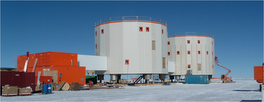Sunday seismometer #1
When I first started this blog nearly a year ago, I ran a short miniseries on my favorite historical seismometers from those on display at the Strasbourg Seismology Museum. The original series petered out after on three posts on the Wiechert, Galitzin and Ewing-Press instruments.
I am starting up the series again as a weekly feature (the Sunday seismometer) that will run over the summer months. I hope you enjoy it!
Reuber-Paschwitz (1889)

The seismogram above represents the first recording of a distant earthquake. It was made on April 17th 1889, in Potsdam, Germany, of an earthquake that occurred in Japan.
The instrument that made this first historical recording was built by Ernst von Reuber-Pashwitz.
Three years later, an identical instrument installed in the Astronomical Observatory in Strasbourg recorded another distant earthquake that occurred in Baloutchistan (a region that is shared by modern day Iran, Afganistan and Pakistan).
These two recordings mark the beginning of modern seismology.
The Reuber-Paschwitz was small (about 40cm in diameter) with a single horizontal pendulum. It seems that none of the original instruments have survived. We do, however, have a schematic drawing that you can see below.
Many of the physical characteristics of this seismometer are recognizable to modern-day seismologists: the horizontal pendulum, the three adjustable feet for leveling, the glass dome for protection from atmospheric perturbations.

The Baloutchistan seismogram recorded at Strasbourg:





No comments:
Post a Comment